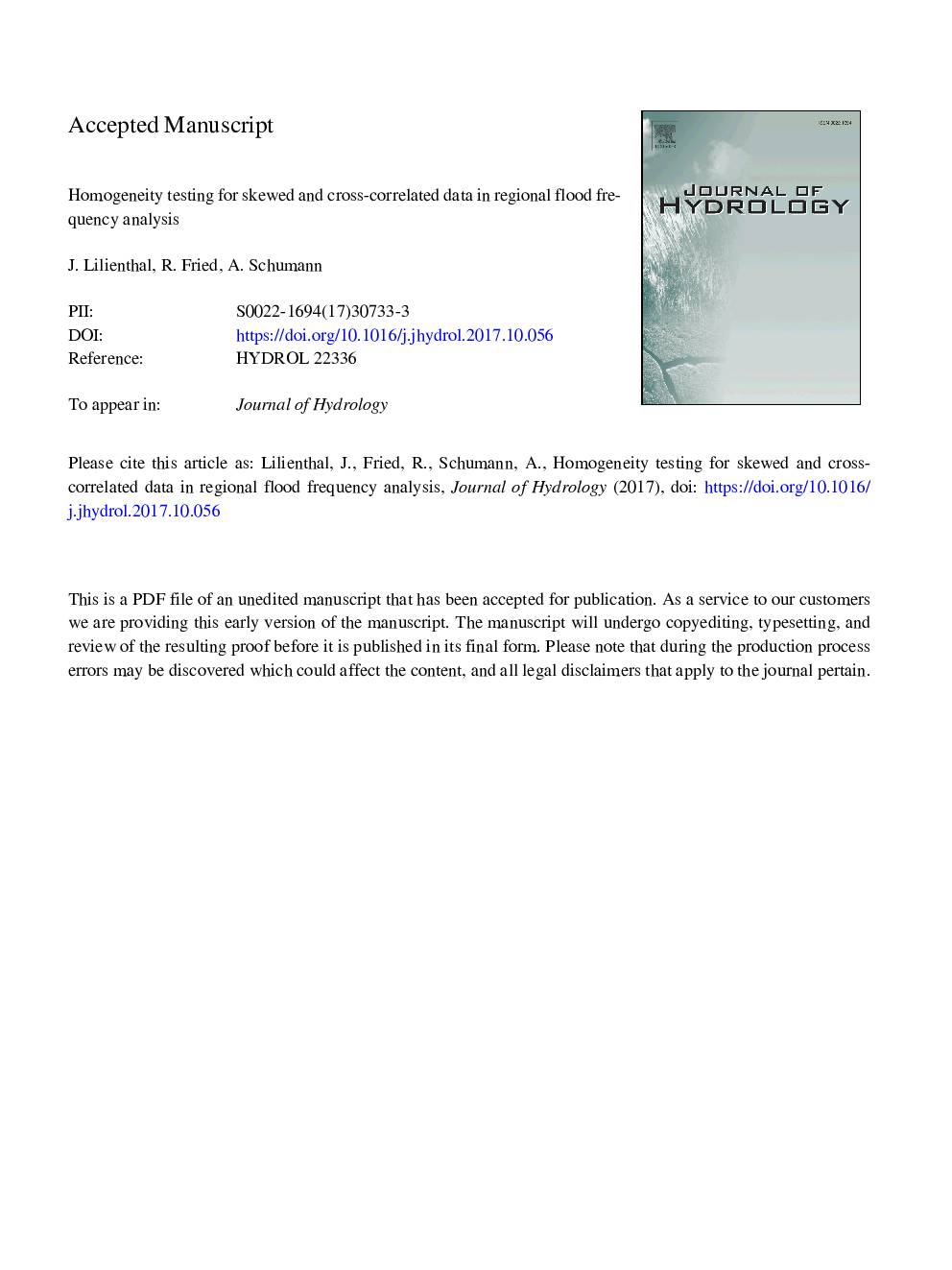| Article ID | Journal | Published Year | Pages | File Type |
|---|---|---|---|---|
| 8895156 | Journal of Hydrology | 2018 | 51 Pages |
Abstract
In regional flood frequency analysis the homogeneity of a group of stations is an essential assumption. A standard procedure in hydrology to evaluate this condition is the homogeneity measure of Hosking and Wallis, which applies L-moments. Disadvantages of it are the lack of power when analysing highly skewed data and the implicit assumption of spatial independence. To face these issues we generalize this procedure in two ways. Copulas are applied to model intersite dependence and trimmed L-moments as a more robust alternative to ordinary L-moments. The results of simulation studies are presented to discuss the influence of different copula models and different trimming parameters. The usage of asymmetrically trimmed L-moments improves the heterogeneity detection in skewed data. Simple copula models are sufficient to incorporate the dependence structure of the data in the procedure. Additionally, a more robust behaviour against extreme events at single stations is achieved with the use of trimmed L-moments. Strong intersite dependence and skewed data reveal the need of a modified procedure in a case study with data from Saxony, Germany.
Related Topics
Physical Sciences and Engineering
Earth and Planetary Sciences
Earth-Surface Processes
Authors
J. Lilienthal, R. Fried, A. Schumann,
